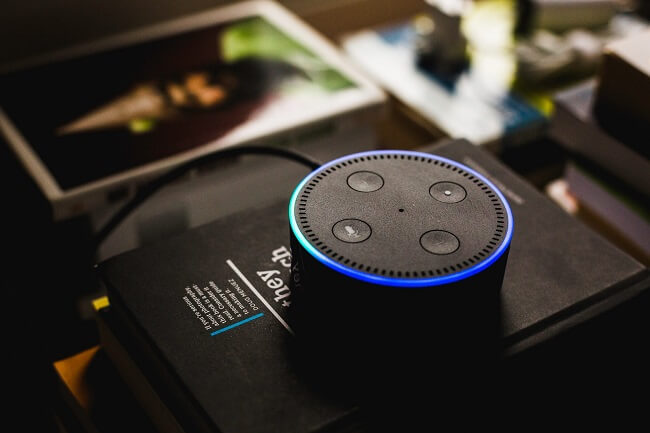In the current marketplace, customers have many different choices concerning the ways they communicate with businesses; of which live chat and conversational bots are becoming increasingly popular. They offer support, recommend products, connect you to relevant employees and answer frequently asked questions immediately, saving the customer time and effort.
As opposed to having to wait on the phone, send emails, or take hours filling out forms, consumers can now engage with businesses through messaging channels that feel more natural and efficient.
The global AI communication market was valued at $6.18 billion in 2021 and is expected to grow at a compound annual growth rate (CAGR) of 23.6% from 2022 to 2030.
While still a relatively recent concept, conversational marketing is a quicker way to move buyers through your marketing and sales funnels. It builds relationships, fosters trust, and creates authentic experiences with customers.
So, just what is conversational marketing, and how can you implement it successfully?
What Is Conversational Marketing?
Conversational marketing is marketing that talks to consumers. This can be done through live chat, voice assistants, or other forms of AI interaction. These experiences can be placed on websites, social media channels, paid ads, and even in physical stores or connected home devices (like smart speakers).
Conversational marketing allows you to change things that are traditionally thought of as marketing and make them interactive. In all marketing, referrals, and conversions is key.
The Benefits of Conversational Marketing
Instead of forcing people to go through lead capture forms and wait days for a response, using targeted messaging and intelligent conversational marketing chatbots to engage with people when they’re on your website gives customers what they want, when they want it.

This makes it much easier for people to engage with your business as well as find and convert better leads more effectively. Conversational marketing is a way to engage with customers on a more personal level that has the potential to provide a better overall customer service. Which means you have happier customers and a company that is set to see greater levels of growth. The trend of conversational marketing is seeing marked success in recent years, something that the statistics are currently supporting emphatically.
The Use Of Conversational Applications During The Pandemic
Let’s start by simplifying this concept with a term that many of us are familiar with: chatbots. One of the most prominent examples of conversational marketing has to be chatbots.
During the pandemic, online shopping began to boom – along with other virtual alternatives in an attempt to stop the spread of the virus. Even doctor’s consultation have taken on virtual forms, making medical assistance more readily available provided you have an internet connection of course.
Customer service has come front and centre, which has led to many businesses implementing conversational applications to meet the demand without face to face interaction.
Think of how online sales assistance has evolved to answer your questions in real-time without human intervention. This 24/7 support offered by chatbots has allowed marketers to provide the instant response that customers crave. With this becoming an expectation, brands currently not utilizing conversational marketing methods run the risk of losing customers to those that have already set up – and have experience – with this strategy.
Chatbots In Conversational Marketing
When we talk about conversational marketing, people automatically think about chatbots.
Chatbots use a conversational approach and interact in real time. Today, chatbots come in a wide range of shapes and sizes with different abilities and tiers of sophistication.
In conversational marketing, marketers often deploy chatbots to streamline the process of collecting data, providing product/service information, and further reaching your target audience.
15 Conversational Marketing Statistics For 2023
Conversational marketing trends have been on the rise for several years, with 2023 set to be no exception. These simple chatbot statistics for 2023 illustrate not just how, but why conversational marketing trends have seen such a meteoric rise in recent times, as well as the reasons why it is set to continue on this way for years to come:
- 71% of customers expect businesses to offer a live chat marketing bot
- 52% of consumers are likely to make repeated purchases if the company offers live chat support
- 79% of businesses say that interactive marketing has achieved positive results in terms of customer loyalty, sales, and revenue
- A study showed that 9 out of 10 consumers would like to be able to use messages to contact businesses
- Conversations on Facebook Messenger between businesses and customers have a 30% higher ROI than retargeting advertising
- 80% of regular inquiries can be answered by conversational marketing bots
- Conversational marketing bots have been found to reduce customer service costs by up to 30%
- 40% of millennials interact with chatbots daily
- 47% of consumers will make a purchase based on feedback received from a chat marketing bot
- A simple marketing chat session can see a 35-40% response rate, while a well-designed chat session can result in an 80-90% response rate.
- 69% of customers love to use chat marketing because of the ease with which they can connect with businesses
- 83% of consumers said they would be more loyal to a brand that offers a chatbot for services such as booking appointments or handling customer service requests
- 72% of people who have used chatbots find them useful and informative
- Using conversational marketing bots, ThinkSpot saw 10x more sales conversations, 70% more qualified leads, and 64% more bookings.
- Gamma has generated more than 50 leads and nearly $1 million in closed revenue through interactive marketing; they increase website conversions by 33% and increase qualified customers by 22% in conversational marketing
Conversational Marketing Examples
When it comes to incorporating conversational marketing into your everyday approach, it can help to draw inspiration from some successful examples. So, here are 3 companies who nailed their approach to conversational marketing:
Spring: Essentially, Spring reinvented the role of a personal shopper with their chatbots. Interacting with their bot first involves answering some questions to narrow down your interests, style and price range from which they can provide tailored recommendations. While many eCommerce sites have a large amount of products to choose from, it can involve users having to search for hours to find exactly what they want. With conversational marketing, Spring were able to cut all this wasted time out and provide the feeling of receiving intimate levels of attention.
Sephora: Makeup and cosmetics company Sephora combines their conversational marketing strategies with geolocation to bring people into their physical locations. With their Messenger services, users can communicate with the company to automatically book a service following which they will be supplied with a number of nearby stores for them to utilize. By using Messenger services this way, Sephora are not only able to stay front of mind with users, they are able to actively encourage conversions.
RapidMiner: RapidMiner effectively used conversational marketing to filter their audience and only communicate with the best possible leads. With many site visitors they couldn’t waste time talking to everyone therefore they engaged only with the people most likely to convert. Through using conversational marketing, they could ask similar qualifying questions to those of their sales team, from which meetings could be automatically scheduled. This greatly streamlined the process and helped to increase conversions.
How Conversational Marketing Can Be Used in Your 2023 Marketing Plan
A successful strategy doesn’t mean you have to abandon all of your inbound marketing strategies. Instead, adopting this strategy will help you generate more qualified leads, increase visitors to your website, and improve your marketing efforts at the same time.
Conversational marketing allows brands to increase engagement, build trust among existing customers, and provide a forum for immediate customer feedback. By using automated chatbots, businesses can quickly answer customer questions, reducing the need for expensive customer service agents. For large companies, these expenses can run into the millions.
In addition, conversational marketing allows entrepreneurs to gain valuable insights into their customers’ behavior and preferences, which can be used for better targeting and segmentation. And, of course, it depends on whether the information is shared within the organization.
One of the main benefits of conversational marketing is that it creates a personal connection with customers. Chatbots allow businesses to interact with customers in real-time, delivering a personalized experience that is well-tailored for each user. This helps strengthen the relationship between brands and their audience and increases loyalty among your customers.
Another benefit is its ability to reduce costs and process basic inquiries quickly and efficiently without the need for human assistance or additional input from the business itself, which means less revenue for staff costs or costs. others related to the manual management of customer services.
Finally, conversational marketing allows customers to improve lead generation through targeted campaigns based on data collected during conversations with users through chat conversations or other communication channels such as Facebook. Messenger, Twitter Direct Message, or WhatsApp.
Two-way communication with current customers and prospects can bring quality and positivity to your marketing activities. The only caveat is that you must try to respond to all customer interactions and be prepared to act based on their feedback.
10 Conversational Marketing Strategy Tips
1. Plan wisely
Chatbots are useful for:
- Reducing customer frustration
- Collecting actionable insights quickly
- Keeping content up-to-date and relevant
- Communicating expectations and best solutions
2. Implement self-service options
Self-service options not only reduce the burden on sellers, but they can also increase customer satisfaction. Giving customers the ability to communicate with an agent is critical.
3. Increase your presence on social networks
Many companies are turning to social media to engage with their audience.
4. Quickly your qualified leads lead to living representatives
Interactive advertising systems allow companies to identify potential buying prospects and place them at the front of the queue.
5. Use bots to facilitate meetings
Enabling bots to qualify leads and book appointments with salespeople is a great way to put the customer at the heart of the conversation. Instead of waiting for reps to return calls, customers can quickly book through the bot and move on to other questions.
6. Enter the text message
Once a meeting with a prospect is scheduled, you can use text messages to send helpful reminders closer to the date. It is important to remember that these examples of conversational marketing are part of a comprehensive strategy that adds value to the customer experience.
7. Customer experience map
Creating a customer experience map can help companies identify where a conversational marketing platform can reduce pain points by connecting prospects with chatbots or live agents.
8. Understand your audience
One of the greatest benefits of using conversational marketing is the data it provides. Each time a visitor interacts with a chat operator speaks to an agent, or completes a survey, they generate more information about their needs.
9. Training sales reps
Training salespeople on strategies and tools that can help them unleash the full potential of conversational marketing. The ability to have real conversations with qualified and prioritized people is a real-time saver. But it’s important that reps also have the soft skills required for effective negotiation marketing.
10. Prioritize the conversation
Every interactive conversation creates a positive or negative experience for the prospect. The better their relationship with the business, the more likely they will be loyal and buy in the future.
Final Thoughts
As more companies continue to implement various types of conversational marketing on their websites and social platforms, customers will expect bots to be a highly valuable and efficient resource for them to interact with.
Creating an effective conversational marketing strategy that affects everything from lead generation to conversions to customer satisfaction could be a determining factor in staying alive in what is set to be a difficult 2022 for many. If this is not already a part of your digital marketing strategy, you should be making plans to do so immediately.
Contact Aumcore to learn more about what Conversational Marketing can do for your brand.
This blog post is Last updated on Feb 20th, 2023.





Tell us your thoughts in the comments